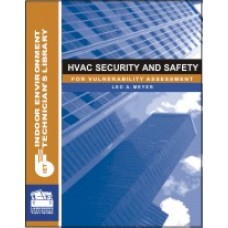If you haven’t already, now’s the time to contemplate your budgets for the 2015 year. I realize the training required to be an HVAC technician/installer is different from being an accountant; however, since many contractors started their careers working with the tools before becoming a contractor, some rudimentary knowledge of accounting is extremely important. This is brought home to me each year as, for the last 25 years, I’ve taught a class at our sheet metal apprentice school on the business side of the business. The first question I ask of these second-year apprentices is how much net profit they feel their contractors make. The numbers invariably range significantly from 5 percent to 50 percent with 15 percent being about the norm. Given that all of the national studies show our contractors have an average of around 2-3 percent, there is an obvious disconnect between what the men in the field believe and reality. This partially explains why the average life expectancy of an HVAC contracting company is four years. It takes about three to four years to discover a lot of work and effort goes into making that 2-3 percent, if they are lucky.
Regarding the accounting required to prepare a basic budget, we developed a simple excel spreadsheet budget form, which I will be happy to send you if you email me at the address below my picture.
One of the most important things to remember in developing your budget is to separate your expense items into direct costs and overhead items. This simple step is extremely important. Anything that can be directly charged to a job should go in direct cost. This includes equipment, labor, materials, and other job-specific direct costs, such as permits or rental items like cranes or manlifts. Again, anything that can be directly charged to a specific job should be labelled as a direct cost. Anything that can’t be charged directly to a job goes into overhead. These include many items, including building rent and utilities, office salaries, advertising, etc. Our spreadsheet has all of these listed out.
As you review all of these overhead items you will find that, for the most part, these costs are fixed expenditures. Regardless of the amount of work you perform, expenses such as gasoline are going to exist.
Next comes the difficult task of determining the amount of volume you will need to have to cover that overhead with, hopefully, some profit left over. The important number you must determine is your anticipated gross profit average. This depends upon a number of factors, with one of the most important being the market situation in your area. Even if you are brand new, you will rather quickly get a feel as to where your pricing must be in order to compete in your market. Then, take a typical job and, using that price point as the selling price, put together all of your direct costs. Subtracting those from your selling price gives you your gross profit (or gross margin).
For example, if you’ve found that your average job can be sold for $5,000 and your direct costs are $3,500, then your gross profit would be $1,500, or 30 percent. If you’ve set your sights on a net profit of 5 percent, that means your overhead costs can’t exceed 25 percent. Since you have already assembled your total overhead costs and determined your desired net profit to be 5 percent, you divide your overhead number by your combined overhead and desired net profit (overhead percentage + net profit percentage). In our example, we would divide our total overhead by [0.25 (overhead) + 0.5 (net profit)]. If our predetermined overhead is, say, $500,000, then we would divide the $500,000 by (0.25 + 0.5). This means our sales volume would need to be $500,000/0.30 = $1,666,666. This would cover direct costs of 70 percent = $1,166,666 and leave $1,666,666 - $1,166,666 = $ 500,000 to cover 25 percent of overhead ($ 1,666,666 x 0.25= $416,666) and leave us with $83,334, or 5 percent, of sales ($1,666,666 x 0.05) net profit.
Obviously, a lot of things have to happen right for this scenario to be correct by the end of the year. We must attain $1,666,666 in sales at the 30 percent gross profit. If we lower our average gross margin by even 2 percent, that drops our net by 2 percent of $1,666,666 = $33,333 to now a net of only $50,000 instead of $83,334. This means we can’t drop our margin to obtain the sales. In addition, we cannot allow our direct costs to increase, either, as a 2 percent increase in job costs to 72 percent reduces our net profit by an additional $33,333, down to only $16,667.
While your numbers will vary from these, the important thing is to take the time to determine, as closely as possible, what your overhead will be. Then, determine the sales price you must attain to cover that overhead. Remember, even small reductions in the selling price that result in reduced gross profits will greatly affect your end-of-the-year bottom line.
Publication date: 2/16/2015
Want more HVAC industry news and information? Join The NEWS on Facebook, Twitter, and LinkedIn today!








